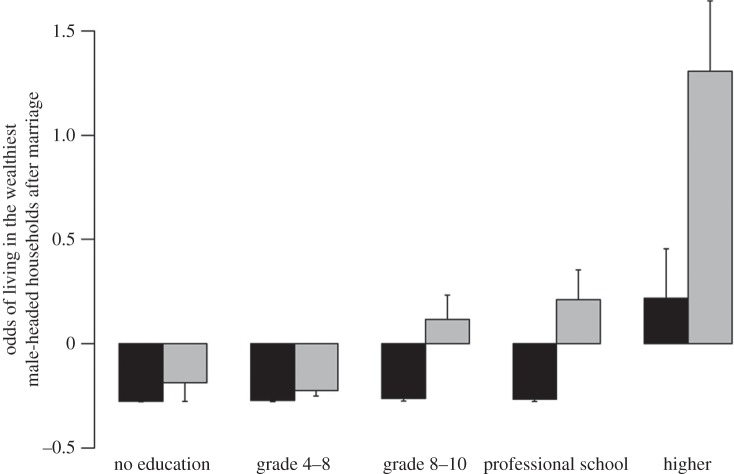Figure 3.
Ecological variation in the socio-economic returns to educational level among married women (n = 5428). Predicted odds (and s.e.). The average wealth of household headed by husbands is used as a proxy for how education translates into socio-economic returns. In Ulaanbaatar (grey bars), educational level is positively correlated with household wealth, and women with the highest level of education are 12 times more likely to live in wealthy households as compared with women with no education. In rural areas (black bars), women with the highest level of education are four times more likely to live in rich households. The ‘returns’ of education are partly mediated by educational assortative mating.

